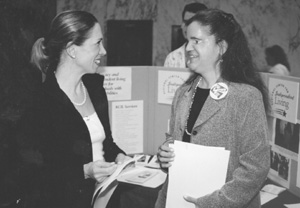|
School Bus Bill Signed into Law
Students with disabilities who get to and from school by school bus
will now travel in a safer environment, thanks to legislation signed
into law on August 9th, (Chapter 453 of 2005) requiring new school
buses which transport three or more children with disabilities who
use wheelchairs or other assistive mobility devices to be equipped
with automatic fire suppression systems.
One of the most significant changes to pupil transportation in New
York over the years is the increased number of children with special
needs who are transported daily on accessible school buses. According
to the New York State Department of Transportation, there are
currently 4,400 buses in the state which are equipped to transport
students who use wheelchairs or other assistive mobility devices. A
bus fire involving children who are typically secured with multiple
seatbelts and lock-down devices presents a potentially disastrous
scenario.
Nobody wants to think of children trapped in a school bus
fire - especially those that cannot evacuate the vehicle
on their own. But school bus fires have happened. In fact, there
have been at least two bus fires this year in New York State alone.
Fortunately, no children were killed in either of these
incidents.
On January 21, 2005 in Staten Island, a school bus fire trapped
eight children with developmental disabilities between the ages
of two and five. The fire spread quickly from the engine
compartment to the passenger cabin. Had the bus been equipped with
a fire suppression system, the driver would not have had to use
his knife and cut away the seat belts, which melted from the heat,
in order to get the children off the bus. Fortunately he and the
matron were able to save all of the children.
A second incident occurred on February 15, 2005 in the Bronx when
a bus transporting five children under the age of five erupted in
flames. It took the driver, the matron and a passer-by to get the
children off the bus before the gas-tank exploded.
According to the National Fire Protection Association,
approximately 90% of all bus and vehicle fires are caused by a
failure originating in the engine compartment. These fires spread
quickly and can engulf the entire bus within minutes. An
engine-mounted automatic fire suppression system extinguishes
flames within the engine compartment instantaneously and prevents
a fire from spreading to other parts of the bus.
|


